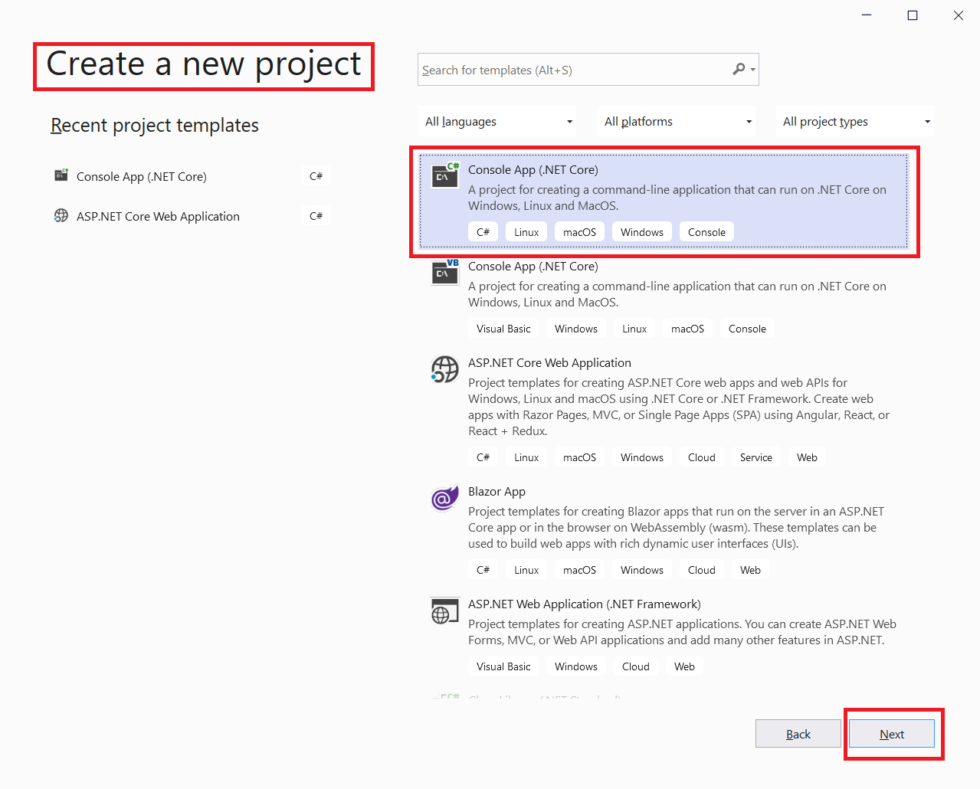
NET 5 is bringing to you a new way to build cross-platform user interfaces. If you want to learn more about the features brought by C# 9, please check out the official documentation.NET MAUI, the Universal UIĪs the third thing, you have to know that. To learn what they are, take a look at the following classic minimal program: using System namespace HelloWorld Top-level statementsĪmong the new features, one of the most notable is the introduction of top-level statements. There are several new features, but here you will find a taste of the most relevant ones. NET platform's main programming language. The second thing you should know is about C#.NET 5 comes with C# 9, the new version of the. ".NET 5 was born with cross-platform compatibility in mind."
Net core versions and features for android#
With that release, you will get the stable release of the new Universal UI and support for the specific TFMs for Android ( net6. NET 5 sets the foundations of the unification, but it will be completed with. NET 5 comes with the platform unification goal, the initial plan changed because of COVID-19. A few features have been removed from the core API set, as you will see later on, but the platform gained a general improvement in performance. Of course, achieving this unified platform required a significant effort and an internal architecture rearrangement. This way, building a platform-specific application is your choice, not a choice depending on the runtime implementation you are using to develop your application.
Net core versions and features windows#
For example, to build an application that uses Windows API, you need to specify the net5.

However, you can still build applications for a specific platform. This enables your application to run on any runtime implementation supporting. NET project to specify the target framework. 0 Target Framework Moniker (TFM), which is the token you set in your. This set of APIs is identified by the net5. NET 5 provides a common set of APIs that aligns the different runtime implementations. NET Standard, and the other variants that caused big headaches to. NET Core 3.1, but basically determines the end of.

NET platform is the unified successor of the various. You understand that, in this messy situation, the desired cross-implementation compatibility is not so easy to achieve. NET Standard, you'll be guaranteed it will run on all the runtimes that implement that specification. In other words, if you build your library for one specific. NET Standard, i.e., a formal specification of the common APIs you should expect across CLI implementations. Should you build different versions of your library to distribute it? The answer to this question was. These different implementations raised the need to understand where a. NET Core from scratch with cross-platform compatibility in mind.

NET Compact and Micro frameworks for mobile and resource-constrained devices, and so on. And in fact, a few of them appeared on the horizon: Mono for Linux-based systems, Silverlight for browser-based applications. The standardization allowed anyone to create their own implementation of the. NET Framework was initially designed for Windows, but its runtime specification, also known as Common Language Infrastructure (CLI), was standardized as ECMA 335. NET, you may be aware of its platform fragmentation since its first release in 2002. NET 5 brings you a new unified vision of the. The first thing you have to know is that.

NET 5 right now, but you can focus on just five things to have a clear understanding of what is going on. NET universe fragmentation that has been arising over the years and brings new amazing features. NET developers with a new cross-platform development experience.


 0 kommentar(er)
0 kommentar(er)
